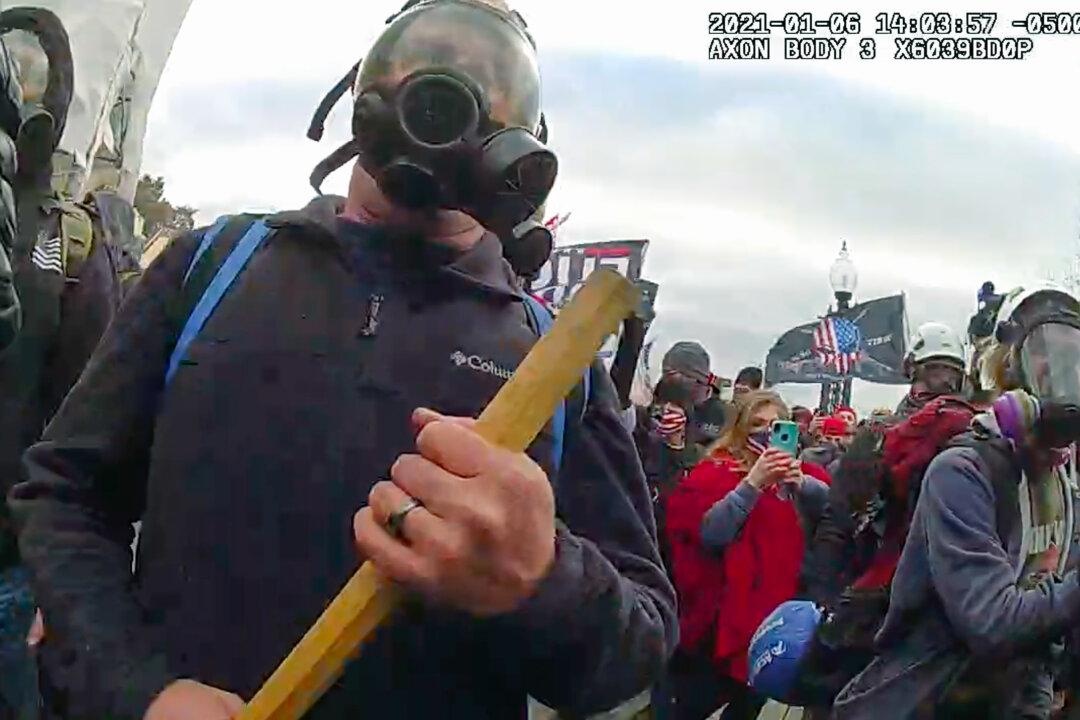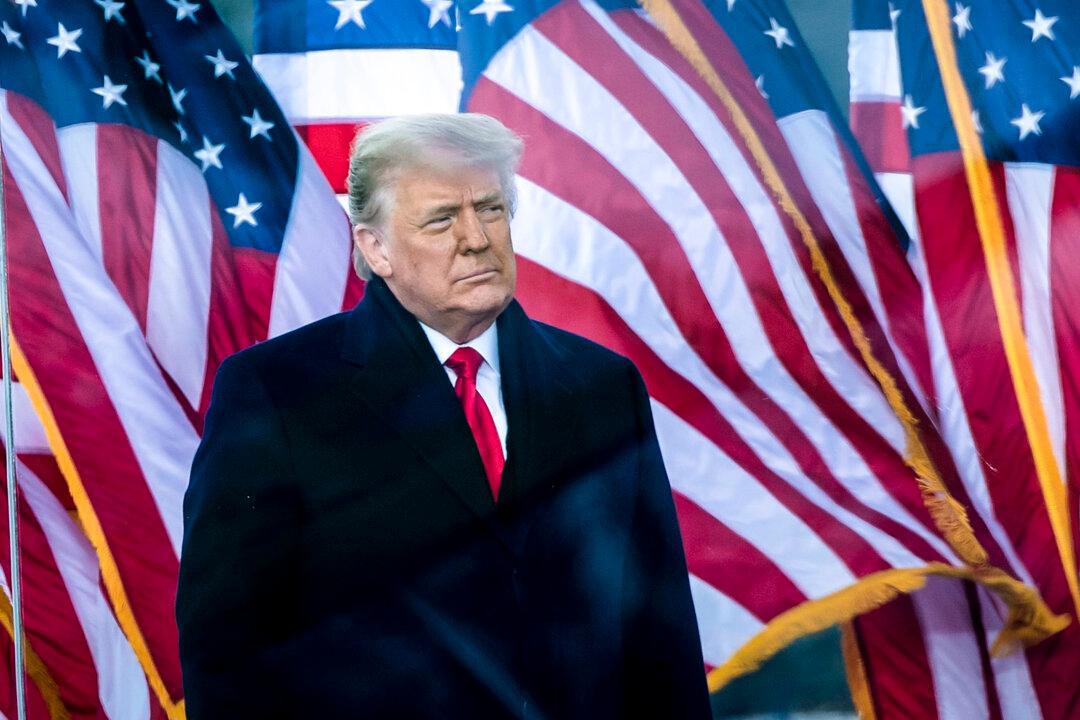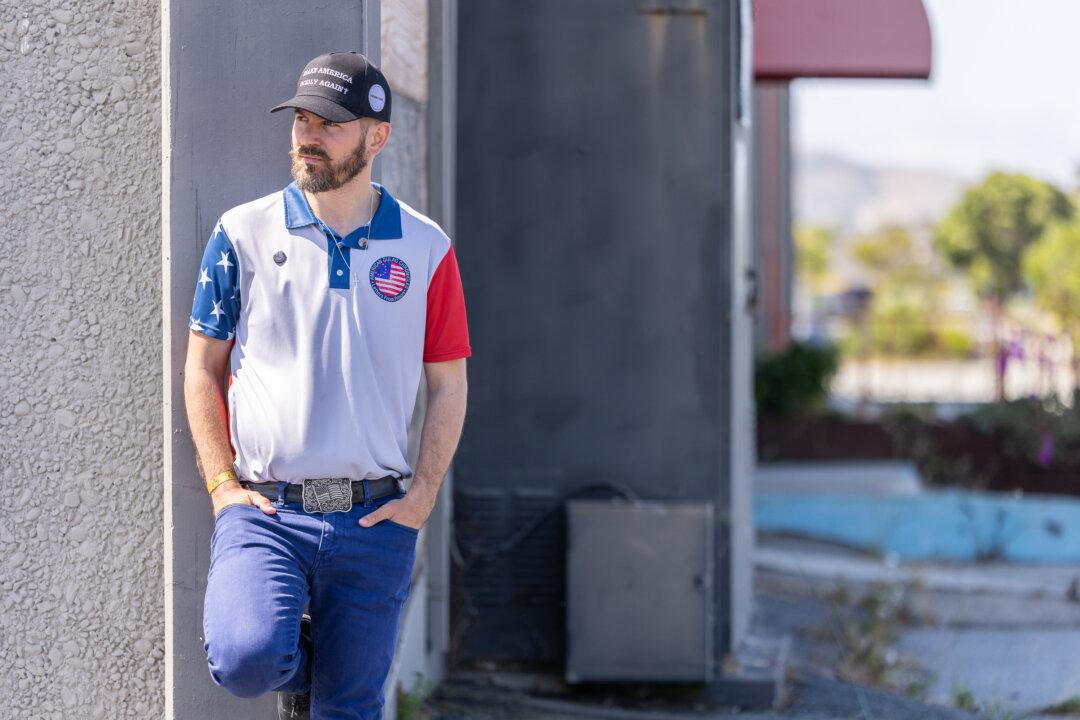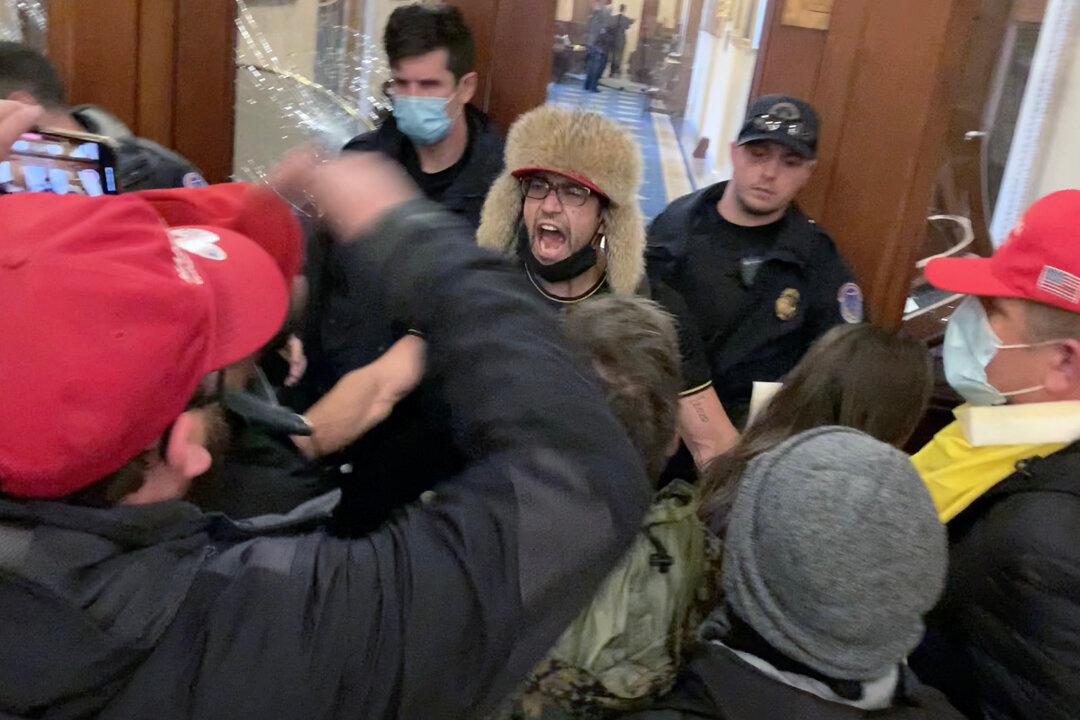The unveiling of some of the 41,000 hours of video from Jan. 6, 2021, that was hidden from public view for more than two years has sparked a new national conversation about just how much still isn’t known about the Capitol incursion.
Fox News host Tucker Carlson was given exclusive access by House Speaker Kevin McCarthy (R-Calif.) to U.S. Capitol security videos and other footage, most of it hidden from public view.
Through the news media, the public has had limited access to the nearly 4.7 years’ worth of video captured by security cameras, police bodycams, and videos taken by tens of thousands of Jan. 6 protesters.
Much of it, however, has been hidden under a judicial protective order. It’s unclear if Congress, as the custodian of Capitol Police security video, provided its entire collection of Jan. 6 video to the Department of Justice. Prosecutors have for more than a year referred to 14,000 hours of video used in the prosecution of alleged Jan. 6 crimes.

Well before Carlson envisioned his highly watched March 6–7 specials, defense attorneys on Jan. 6 criminal cases complained that video and other evidence beneficial to their clients have not been disclosed by the government as required under Supreme Court rulings.
With Carlson’s revelations about the “QAnon Shaman,” Jacob Chansley, and mysterious Jan. 6 figure Ray Epps, the cries from defense attorneys about exculpatory evidence will likely increase in the coming weeks and months.
Since Jan. 6 was arguably the most photographed and videoed event in recorded history, the truth about the day should be easy to discern.
But the massive digital evidence cache has been tightly controlled—and even manipulated—to great effect on public opinion. Unfettered public access to all of the video—if it is granted—will crack the legacy media narrative even more and widen the political divide in America.
Failure of Leadership in Evacuation
The evacuation of the U.S. Senate and U.S. House on Jan. 6 provides perhaps the clearest case of how security video can define a critical story.In Carlson’s second Capitol videos special on March 7, he will tell the story of U.S. Capitol Police Lt. Tarik Johnson, who said he was left without direction on Jan. 6 by assistant Capitol Police chief Yogananda Pittman.
After taking to the radio to ask for permission to evacuate the Senate, Johnson got no response. Even after the USCP dispatcher repeated Johnson’s call for direction, there was silence from the Command Center.

Johnson forged ahead with the evacuation and went on to direct the evacuation of the House. He said on the radio that he would take any discipline for acting on his own.
“There was no response from anybody at the Command Center,” Johnson told The Epoch Times. “I say even before I initiated evacuation, I say specifically, ‘We’ve got to start thinking about getting the people out before we don’t have a chance to.’
“I heard no response. Then I asked for permission to evacuate. I heard no response.”
Johnson said the Command Center’s silence caused the loss of precious time that might have prevented the shooting death of protester Ashli Babbitt at about 2:45 p.m. on Jan. 6.

Police Actions Raise Questions
Carlson aired Capitol security video showing Capitol Police leading the QAnon Shaman around the building and letting him into the U.S. Senate, where he posed on the rostrum and made a speech.Many other aspects of police presence and behavior on Jan. 6 have already drawn scrutiny and critique.

Bodycam footage from several Metropolitan Police Department (MPD) officers shows Thau dropped at least four protesters with a taser, tossed uncounted explosive munitions into the tightly packed crowd, directed high-velocity pepper spray into a stiff headwind, and fired a 40mm shell from a munition launcher into the crowd.
His own bodycam shows him rushing up to another officer under the inauguration scaffolding and shouting, “We need more [expletive] munitions!”
After being possibly the most active officer in applying “pain compliance” to the crowds, Thau concluded that the strategy did not work. He told another officer the effort was like “shooting zombies” and declared, “We’re multiplying them by shooting them.”
Police use of force became a hotly debated topic, at least in the public square. Metropolitan Police declared all of its uses of force on Jan. 6 to be justified.
A gas grenade launched by MPD Officer Rich Khoury at the urging of Thau misfired, landing amid a crowd of supervisors and officers. The resulting gas cloud sent police scurrying and weakened the nearby police line.

One man who knows it all too well is Mark Griffin of Canadensis, Pennsylvania, who was shot with a 37mm munition shell at nearly point-blank range on the afternoon of Jan. 6.
Griffin was standing at the police barricades on the west front, explaining to a young MPD officer why he and so many others came to Washington. Then he was blown to the ground by a shell that impacted above his left knee, splitting his femur and necessitating surgeries that he said cost $250,000.
“I went down, and some people helped me up,” Griffin told The Epoch Times. “I had no idea how bad I got hurt.”
Crowd-control shells are typically not for close-quarters use and should never be fired directly at a person, Kephart said. Firing the weapons close to people can lead to serious injury or death, according to manufacturers’ warnings.
Griffin said he hopes the release of CCTV security video from the Capitol exterior will pinpoint which police officer fired the shot that shattered his leg.

“He knows exactly where he was on that Capitol building. You know, he works there,” Vargo told The Epoch Times. “He’s not just a citizen. He works there. He knows how high up he is. He shoved me not with just one arm but two. That means he wanted me off of it. It was very intentional.”
Were Federal Agents Involved?
For more than a year there has been growing speculation that undercover agents and police officers took active roles in the rioting while encouraging protesters to go into the Capitol.Bobby Powell, then a radio journalist from Michigan, filmed a man he said was an undercover agent pulling a large sheet of tempered glass out of a window on the patio near the Columbus Doors.

Powell also encountered another man, dressed in tactical gear, holding open the Columbus Doors with a long wooden dowel and shoving people into the foyer leading to the Great Rotunda.
Neither the glass man nor the doorman ever appeared on the FBI’s Jan. 6 most-wanted website.
The other two officers walked behind the late Babbitt, and one stated his belief that someone would get shot that day. About an hour later, Babbitt was shot by USCP Lt. Michael Byrd as she climbed into a broken window leading into the Speaker’s Lobby. She was pronounced dead 30 minutes later.
Defense attorney Brad Geyer spent months investigating more than 100 suspicious actors who were at the Capitol. Geyer identified a core group that took part in the breaching of the Columbus Doors and incited a crowd on the east side to go into the Capitol.

Ray Epps, who was captured on a viral video from Jan. 5 urging protesters to go into the Capitol the next day, is again the subject of intense speculation after Carlson’s March 6 special. Carlson claimed that Epps lied to Jan. 6 Select Committee investigators about what time he left the Capitol grounds.
Epps texted his nephew at 2:12 p.m. and said he “orchestrated” the protest. He told the committee he was no longer at the Capitol when the text was sent. Carlson said security video he found shows Epps on one of the west terraces a half-hour after that.
Epps was at the first breach of a police barricade just before 1 p.m. on Jan. 6. He stepped over a toppled barricade on the west front and was spotted numerous times in the crowd during the afternoon.
Epps was interviewed by the Select Committee and twice by the FBI, but he was never arrested or charged for his actions at the Capitol, despite admitting to the FBI that he was likely guilty of trespassing.
“I was afraid they were going to set off an explosion on one of the side streets,” Epps said, according to a recording of the interview obtained by The Epoch Times. “So we tried to stay in the middle, tried to get there early, tried to stay away from the sides. And if something like that happened, I had a first-aid kit. I could help out.”
“Mr. Neely’s entry into the Capitol was directed by Pink Beret,” West contended in a court filing. “She had associates in the building that day and seemed to have information well beyond that of a normal citizen there to protest.
Withholding of Exculpatory Evidence
Numerous defense attorneys have complained that the Department of Justice has not provided all exculpatory evidence as required by law. Former sheriff’s deputy Ronald Colton McAbee alleged in court filings that the DOJ presented bodycam video that had no audio.When an investigator found the same video with the sound included, the file showed that McAbee was not assaulting an officer on the Lower West Terrace, he was shielding him and trying to help him to his feet, court papers say. Despite the discovery and McAbee’s motion to be released from pretrial detention, U.S. District Judge Emmet Sullivan ruled McAbee must stay in lockup.

Sullivan had referred to McAbee and other Jan. 6 protesters as “terrorists” during a court hearing. Sullivan has since been removed from the case.
Exculpatory evidence became a major sticking point in the seditious-conspiracy trial, which ran from late September to late November 2022, of Oath Keepers founder Elmer Stewart Rhodes III and four other individuals.
Judge Amit Mehta refused to allow defense attorneys to call a retired New York police sergeant and Oath Keepers member to describe how he and other Oath Keepers helped a U.S. Capitol Police lieutenant rescue 16 officers trapped in the foyer inside the Columbus Doors.





